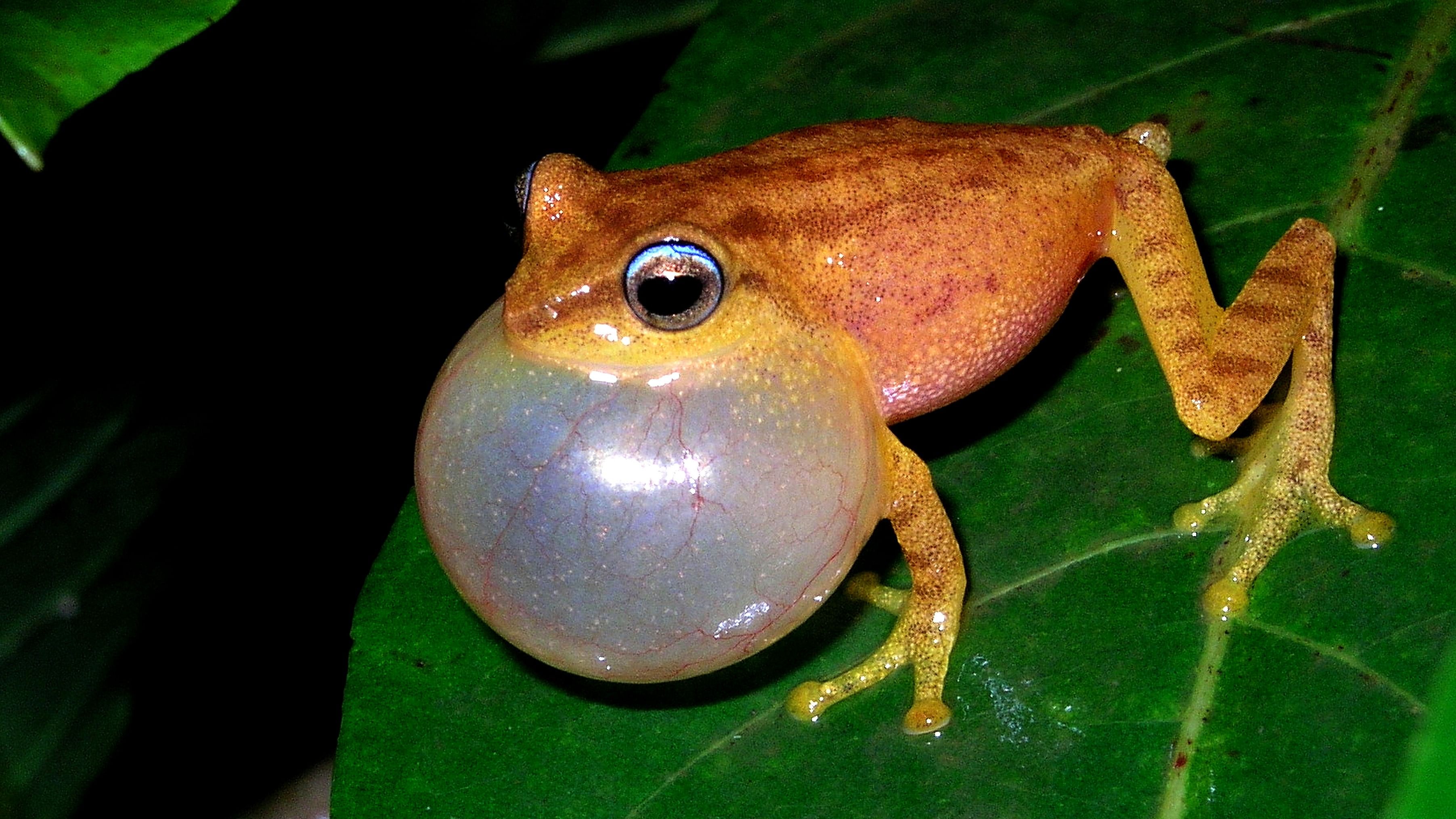
Coorg yellow bush frog; participants look for a species that lays eggs near moist, rocky surfaces.
Photos by Gururaja K V & Vineeth Kumar M
Each year, as the monsoons drench the Western Ghats, a motley group of scientists and nature enthusiasts head to the verdant landscape of Bisle Ghat in Karnataka’s Hassan district. They gather to meet a creature that evolved 350 million years ago, long before our time — the humble frog.
The Bisle Frog Watch is an annual citizen science initiative, organised since 2012 by Gubbi Labs, a research collective, and the Bisle Kappe Team led by volunteers Rohit S Rao and Vineeth Kumar K.
“The Bisle Frog Watch is a long-term ecological research initiative for biodiversity estimations with a citizen science interface. The workshop aims to spread awareness about amphibians, and in the process, monitor and document the amphibian diversity found in this region,” said Sudhira H S, director of Gubbi Labs.
Frogs play a critical role in maintaining the delicate balance in ecosystems.
“Frogs are the conveyor belts of energy from the insect world to the next level. Their insect-rich diet makes them biological pest controllers,” said Gururaja K V, batrachologist and associate professor at the Srishti Manipal Institute of Art Design and Technology.
These creatures face threats from shrinking habitats and a host of other factors. The State of the World’s Amphibians: The Second Global Amphibian Assessment (GAA2) completed in June 2022 found that 41% of amphibians are globally threatened with extinction, making them the most threatened vertebrate group.
After Kerala and Tamil Nadu, Karnataka has the third highest diversity of amphibians, with 100 species, of which, 30 are threatened, as per the GAA2 findings.
Close to 92% of the dancing frog species (Micrixalidae), endemic to Western Ghats, and known for their peculiar foot-flagging behaviour to draw a mate, are threatened.
Endemic species
“Of the 24 dancing frog species in the Western Ghats that we assessed, 22 are threatened. These frogs dwell in and around perennial streams, and the threats range from habitat loss and modification from agricultural expansion, to changes to stream habitats due to check dams and anthropogenic climate change,” said Gururaja.
Given the grim prognosis, initiatives like the Bisle Frog Watch that spotlight these amphibians and their habitats assume importance.
The workshop featured a blend of sessions during the day and immersive field sessions at dawn and dusk.
Participants of the June 2024 Bisle Frog Watch observed a total of 22 species of frogs and toads including the Coorg yellow bush frog, the Indian bullfrog, the Malabar gliding frog, the golden-backed frog and the Kempholey night frog, among others.
Participants were also guided through ‘Hoppy Frog’, a board game that Seshadri K S, faculty at the Ashoka Trust for Research in Ecology and the Environment (ATREE), created along with researchers Vidisha M K and Maria Antony, on an outreach grant.
“Hoppy Frog was designed to go beyond the staid presentation format, to highlight the threats and challenges to frogs and their habitats with an engrossing game,” said Seshadri.
Workshop
Another topic of conversation was the intriguing science behind amphibian acoustics.
“Each species has a unique vocal repertoire. Changes to their habitat can disrupt communication and ultimately their reproductive fitness,” said Vineeth Kumar K, Faculty at St Mary’s ISC, Chikkamagaluru.
In the 12 years of watching frogs at Bisle Ghat, participants have recorded around 40 amphibian species, many endemic to the region.
Preeti Hebbar, assistant professor, Manipal Institute of Technology, discussed her work using molecular tools to study amphibians and understand the influence of river basins and geographic distance on the genetic diversity of certain species.
“Using molecular tools, a large team of us batrachologists, conservation geneticists and citizen scientists discovered new species of frogs in the Western Ghats and in the west coastal plains,” said Preeti.